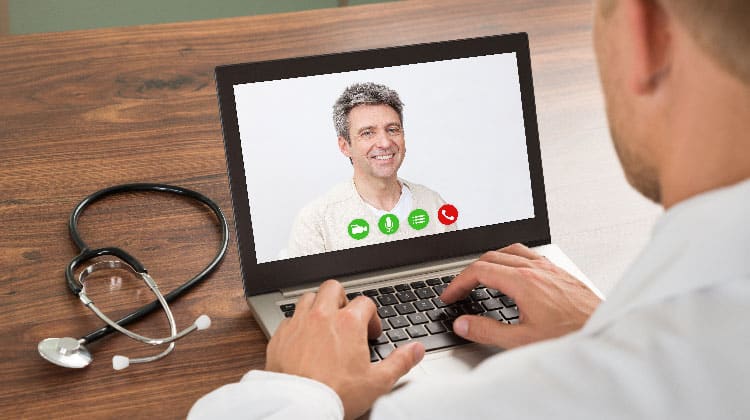By 2025, the senior living industry will need to add 1.2 million new employees according to the Bureau of Labor Statistics. However, building up the workforce isn’t the only way to serve the healthcare needs of senior living residents. The use of video technology can help address the forecasted workforce gap as virtual visits is emerging as a critical and convenient way to deliver patient care in the senior living industry.
The deployment of telehealth in senior living facilities is not as widespread as the use of other technologies. A Ziegler survey of 143 CFOs who operate retirement communities and assisted living facilities showed that nearly 89% of facilities use EHR. In comparison, 94% have contracts with outside physicians for patient care while 83% offer rehabilitation and therapy services, most typically from an outside provider. However, only 9% of the surveyed CFOs indicated that their facilities offer residents and patients access to a telehealth program. “Telehealth is the least adopted for the technologies and services,” Ziegler says. A January survey of 115 senior or assisted care CFOs indicated that 81% of facilities plan to increase their technology spending this year and about 25% of chief financial service officers say their assisted or senior living facility would invest in telehealth.
The benefits of using virtual care in senior living facilities are many.
- Independence: By offering residents the ability to participate in virtual appointments with their providers, residents’ independence is enhanced as seniors can spend more time on their preferred activities and less time traveling to / from medical offices and waiting for check-ins and follow-up appointments.
- Integrated Care: The National Council of Aging reports that approximately 92% of older adults have at least one chronic disease, and 77% have at least two. Since many senior residents may be supported by multiple specialists, virtual visit solutions enable several providers to conveniently collaborate on a single case. Video calls can help better facilitate the coordination of care amongst key stakeholders. The resident, their family, providers, and the facility staff can all participate in virtual check-ins – without requiring the resident or other care team members to travel to other facilities. This also means that the resident does not have to commit to multiple, separate appointments with each provider.
- Individualized Support: Residents can conduct hold real-time video visits with their case manager and receive up-to-date and personalized education and support via ongoing calls. These quick check-in’s can help identify emerging complications before urgent care visits or a trip to the Emergency Department are required.
- Increased Accessibility: Many seniors may be unable to leave their residence due to illness or injury. Reliable, timely, and/or affordable transportation to a care facility or medical office might not be always available. With virtual care, providers bring the care to the resident – regardless of location and timing. Senior living communities can augment their staff by using technology to provide residents’ access to healthcare, around the clock.

